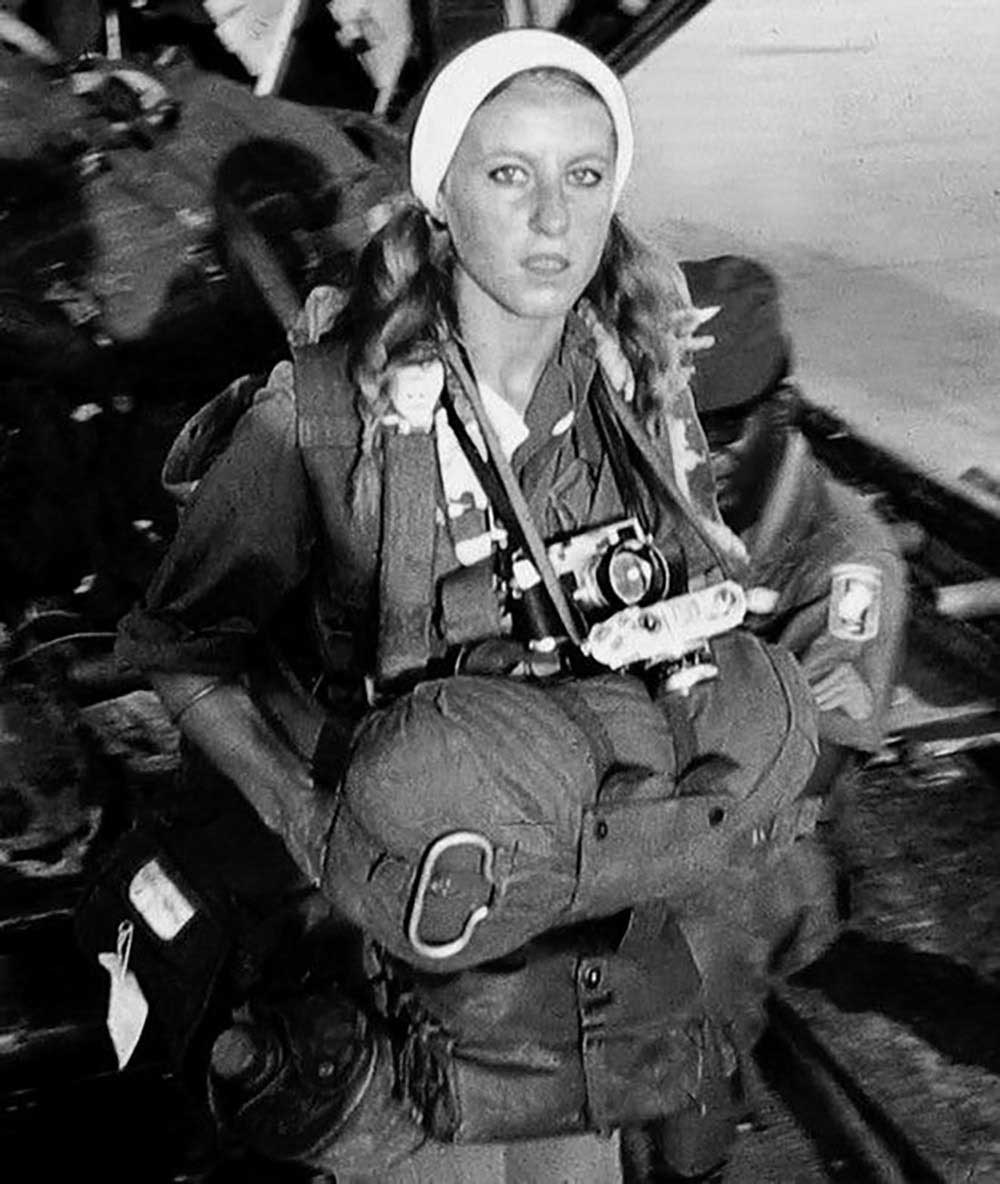Catherine Leroy was a truly challenging woman. By the 60’s, there were barely women journalists on the war fronts but she dared to land in Vietnam, ready to capture the human side of the War. Her photos were part of a movement that sought to show the other side of the victorious images of the Marines.
Her most famous photo was not an American flag raised in a war territory, but one that showed the face of anguish of a marine next to the corpse of a companion with the smoke of the explosions as background.
Catherine Leroy was born on August 27, 1944 in Paris, France, in a very traditional Catholic middle class and went beyond the toughest taboos in an essentially male-professional world. She spent her childhood in Enghien-les-Bains, on the outskirts of Paris. Catherine studied to be a pianist, although every week she devoured the images published by the Paris-Match magazine and idolized the photographers who published in it. At 18, she began to practice skydiving.

Moved by the images she saw in that magazine, in 1966, being just 21 years old, she decided to go to Vietnam with a firm purpose: to tell the world the other side of the war and document the life of American troops; to “give a human face to war”. She bought a one-way plane ticket to Laos to go to Vietnam, with a newly released Leica M2 and only about $100 in her pockets.
From a young age, she showed an audacity and courage that hadn’t been seen before in a woman. She didn’t mind taking the risk of going to Vietnam as a freelancer without any contract and a very short list of published works. Once she arrived in Saigon, she went to see the head of the Associated Press office, photographer Horst Faas. She was allowed to work and AP paid her for the pictures they used. In 1967, she became the first woman and accredited journalist to participate in a combat jump by parachute, with the 173d Airborne Brigade of the Marines, during the combat operation called “Junction City”.
“I think of the U.S. Marines like we used to think of the Foreign Legion; as big mouths with big hearts.”
In May of that same year, she almost died in Vietnam from a mortar shot that left her badly injured while accompanying a marine unit near a demilitarized zone. Her camera had saved her but she was convalescent for a few weeks before she could return to the front. For her work in Vietnam, she received the George Polk Award in 1967. The following year, in 1968, she was captured by the army of North Vietnam (Vietcong) with the journalist François Mazure during the Tet Offensive. Leroy and Mazure managed to speak with a Lieutenant in French and explained that they were simple journalists who had no intention of causing harm.
Their captors returned the cameras and left them free, but before leaving, Leroy convinced them to allow her to photograph them on the premise that “she wanted to show the other side of the coin”. This is how she became the first journalist to take photos of soldiers from North Vietnam from their own lines. For her, it would be “the first time she saw the enemy as human persons”, and probably for the spectators of those photographs as well, because they turned (along with her first-person account) into the cover of Life magazine on February 16 of 1968.
After almost three years in Vietnam, she returned to Paris. Despite the horrors she saw and lived, it was difficult for her to adapt to a normal life. Not long after, she went to the United States and since then, covered different conflicts in Northern Ireland, Cyprus, Somalia, Afghanistan, Iraq, Iran, Libya and Lebanon. Her pictures have been distributed mainly by Black Star, Sipa Press and Gamma agencies, and published in the largest international magazines such as Paris Match, Time, Life, Look and Epoca. After her experiences in the siege of Beirut of 1982, she left the warmongering photography. She began working in fashion photography, mainly in Japan. She was the first woman to win the Robert Capa medal in 1976. In 1997, she received a special award for her “contribution to photojournalism” by the journalism department of the University of Missouri. Catherine Leroy died of cancer in Santa Monica, California, on July 8 of 2006.






